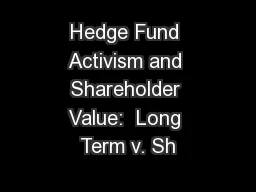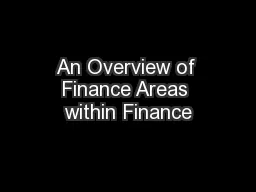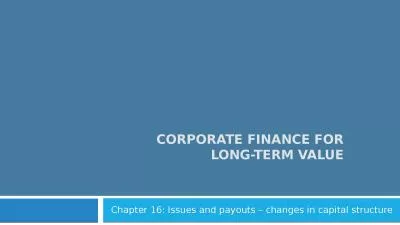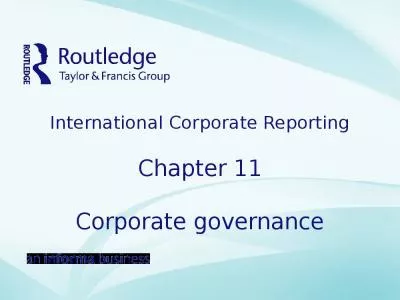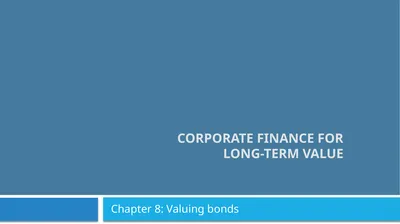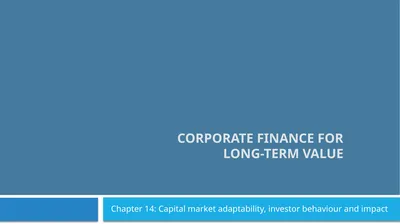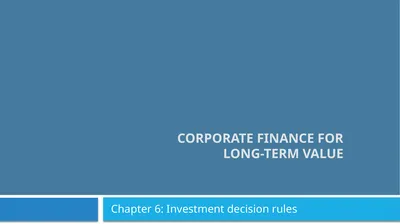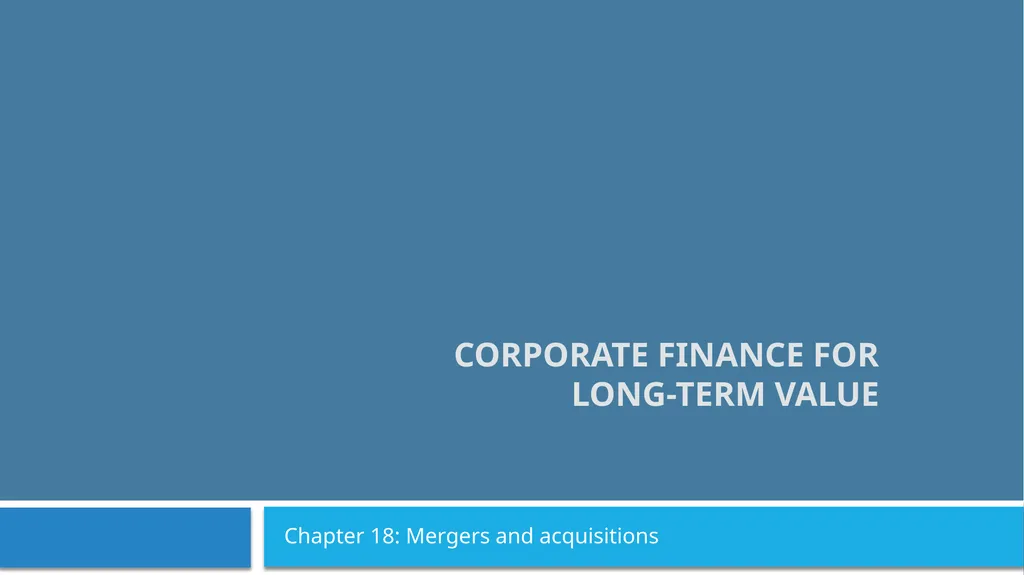
Author : test | Published Date : 2025-06-27
Description: Corporate Finance for Long-Term Value Chapter 18: Mergers and acquisitions Chapter 18: Mergers and acquisitions Part 5: Corporate financial policies The BIG Picture 3 MAs are very large investments in which a company takes over anotherDownload Presentation The PPT/PDF document "" is the property of its rightful owner. Permission is granted to download and print the materials on this website for personal, non-commercial use only, and to display it on your personal computer provided you do not modify the materials and that you retain all copyright notices contained in the materials. By downloading content from our website, you accept the terms of this agreement.
Here is the link to download the presentation.
"Corporate Finance for Long-Term Value Chapter 18:"The content belongs to its owner. You may download and print it for personal use, without modification, and keep all copyright notices. By downloading, you agree to these terms.


